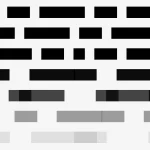| Author: | Charmingdc |
|---|---|
| Views Total: | 5 views |
| Official Page: | Go to website |
| Last Update: | January 12, 2025 |
| License: | MIT |
Preview:

Description:
ScrollJs is a JavaScript library for creating scroll-triggered animations and lazy loading images.
It gives you full control over animation styles and works with existing CSS classes or third-party animation libraries like Animate.css.
ScrollJs works by using the Intersection Observer API to detect when elements enter or leave the viewport. This implementation allows for flexible, performant scroll-based animations and actions, with options for one-time or repeated triggers as elements enter and leave the viewport.
How to use it:
1. Insert the ScrollJs JavaScript library in your HTML document:
<script src="/path/to/scroll.js"></script>
2. Initialize ScrollObserver. The animateOnce parameter determines if animations trigger once or repeatedly. The options object allows customization of the Intersection Observer API settings.
- root: Specifies a custom container as the viewport (default: the browser viewport).
- threshold: Determines how much of an element must be visible to trigger the animation (0-1, default: 0).
- rootMargin: Adjusts the viewport’s dimensions (e.g., ‘-10px’ shrinks the viewport by 10px on all sides).
const observer = new ScrollObserver(false, {
root: rootDiv,
threshold: 0.8,
rootMargin: '-10px',
});3. Use the .observe() method to trigger animations when the target element is scrolled into view.
- The first argument is the element to observe.
- The second argument is an optional callback function (explained below).
- The third argument is the CSS class containing your animation.
observer.observe(myElement, null, 'myAnimation');
.myAnimation {
/* Your CSS animation properties */
}4. You can also use .observe() with a callback function to lazy load images.
observer.observe(image, (img) => {
img.src = img.dataset.src;}, 'visible');This sets the image src attribute when the image becomes visible, using a placeholder data-src attribute in your HTML.
5. Unobserve & Disconnect:
// Stops observing a specific element. observer.unobserve(element): // Stops observing all elements. observer.disconnect():
Changelog:
01/12/2025
- Bugfix










